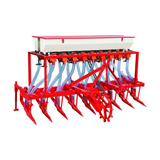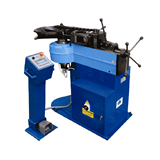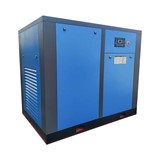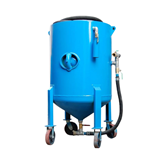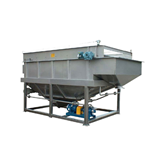Explore used tractor prices in Australia and get expert buying tips, financing options, and maintenance advice for Australian farmers.
Key takeaways
- Used tractor prices in Australia typically range from $5,000 to $90,000, depending on age, hours, brand and features.
- Compact and utility tractors (40–100 HP) are ideal for small farms and range from $5,000 to $45,000 used.
- Row-crop and high-horsepower tractors (100–300+ HP) can cost $40,000 to $90,000+ used.
- Buying used can save up to 40% compared to new, but must include a detailed inspection and service history check.
- Financing is available for used tractors through agricultural lenders and equipment finance brokers.
- Tractors must comply with Australian safety standards, including ROPS, seatbelts, and lighting for road use.
Introduction
Buying a used tractor in Australia can be a smart and cost-effective move for farmers, contractors, or hobbyists alike. With proper research, you can get reliable horsepower at a fraction of the cost of new machinery. This guide will walk you through everything you need to know before purchasing—from types and prices to maintenance, compliance and where to buy.
Types of used tractors
1. Compact tractors (20–50 HP)
- Ideal for small acreages, landscaping, hobby farms.
- Easy to transport and store.
- Attachments: slasher, loader, post hole digger.
2. Utility tractors (50–100 HP)
- Best for general farm work: ploughing, baling, towing.
- Used heavily in mixed farming and viticulture.
3. Row crop tractors (100–200 HP)
- Designed for large fields, crops and broadacre use.
- High clearance and advanced transmission features.
4. High-horsepower and 4WD tractors (200–500+ HP)
- Needed for large-scale grain, cotton or sugar farms.
- Expensive but powerful; often leased or bought used to reduce capex.
Used tractor prices in Australia
Used tractor prices vary based on condition, hours, make, horsepower and attachments. Here's a price breakdown by category:
- Compact tractors (20–50 HP): $10,000–$25,000
- Utility tractors (50–100 HP): $20,000–$45,000
- Row crop tractors (100–200 HP): $35,000–$70,000
- High HP tractors (200+ HP): $50,000–$90,000+
What to inspect before buying
- Engine hours: Under 5,000 hours is preferred for most tractors.
- Service history: Ask for full maintenance records.
- Hydraulics: Test lifting capacity and check for leaks.
- Transmission: Ensure smooth shifting in all gears.
- Tyres: Replacement costs can run $2,000–$6,000 for 4WD tractors.
- Frame and chassis: Look for cracks, welds, or signs of rollover.
Operating and maintenance tips for used tractors
Keeping your used tractor in good working condition extends its lifespan, minimises downtime, and protects your investment. Below are key operational and maintenance practices tailored to Australian conditions:
Routine servicing
- Change engine oil and filters every 100–250 hours depending on the manufacturer’s guidelines and operating intensity.
- Inspect and replace hydraulic filters and fluids every 300–500 hours, or annually.
Dust and debris management
- In dry and dusty regions, regularly clean radiators and air filters to prevent overheating and reduced engine efficiency.
- Use compressed air or low-pressure water to clean without damaging components.
Lubrication
- Grease all joints, linkages, and pivot points at least monthly during high-use periods such as planting or harvest.
- Prioritise areas like front-end loader pins, PTO shafts, and steering arms.
Use of quality parts
- Stick to OEM or reputable aftermarket parts to ensure longevity and maintain resale value.
- Avoid grey-market or low-quality components that may void insurance or reduce reliability.
Daily checks
- Perform quick pre-start inspections for fluid levels, tyre pressure, and mechanical warning signs.
Financing options in Australia
Used tractors are eligible for a variety of financing solutions through banks, brokers, and agri-lenders. Here’s what buyers should know:
Eligibility and equipment age
- Most lenders finance tractors up to 10 years old, particularly if well maintained or low-hour.
- Some may consider ex-demo or imported stock depending on the brand and serviceability.
Interest rates and terms
- Expect rates between 6% and 9%, depending on your credit profile, the equipment’s age, and the deposit.
- Loan terms typically range from 12 months to 5 years, with seasonal or balloon payment options available.
Tax incentives
- Eligible small businesses can claim an immediate deduction on used tractor purchases up to $20,000 under the Instant Asset Write-Off (FY2024–25).
- Consult your accountant to determine eligibility and timing.
Compliance and certification in Australia
Before operating your used tractor, it’s essential to ensure it meets all relevant safety and regulatory requirements under Australian law. This protects your workers, your business, and ensures legal operation.
- ROPS (Rollover Protective Structure): All tractors used in commercial farming must be fitted with a compliant ROPS under Australian WHS regulations. If not already installed, a certified ROPS must be retrofitted.
- Seat belts and safety decals: A functioning seat belt is mandatory when ROPS is installed. Safety decals and warning labels must be present and legible to support safe operation.
- Lighting and reflectors: If the tractor will be driven on public roads, it must be equipped with working headlights, brake lights, indicators, reflectors, and often a rotating warning beacon.
- Operator’s manual and logbook: These should accompany the tractor to support training, maintenance, and WHS recordkeeping. A documented service history can also strengthen resale value and demonstrate compliance.
- Registration requirements: In some states, tractors must be conditionally registered if driven on public roads, even for short distances. Check with your local road authority (e.g. VicRoads, Service NSW, TMR QLD) to determine your obligations.
Neglecting compliance can result in costly fines, legal liability, or prevent insurance claims in the event of an accident.
Climate and region-specific recommendations
Australia’s vast and varied geography means a “one-size-fits-all” approach doesn’t work when buying a used tractor. From the humid tropics of Queensland to the arid inland and the cooler southern grain belts, each region places different demands on agricultural machinery. Here's how to choose wisely based on your location:
Northern Australia (e.g. QLD, NT)
- Climate: Tropical and humid with high rainfall.
- Key Considerations:
- Prioritise sealed, water-resistant electrical systems to reduce the risk of corrosion.
- Look for high-clearance tractors to manage wet or muddy paddocks.
- Ensure the cooling system is robust and rust-free, as high humidity can accelerate wear.
- Air-conditioned cabins are often essential for operator comfort during long, hot seasons.
Southern Grain Belt (e.g. VIC, SA, southern NSW)
- Climate: Temperate with cold winters and hot summers.
- Key Considerations:
- Tractors with dual rear wheels or ballast options perform better in cropping operations.
- Ensure compatibility with front-end loaders or seed drills used in large-scale cropping.
- For viticulture and horticulture, consider narrow tractors suited to row cropping.
Coastal Regions (e.g. NSW South Coast, TAS, parts of WA)
- Climate: Mild and wet with salt-laden air.
- Key Considerations:
- Avoid models showing signs of rust on chassis or undercarriage.
- Prioritise galvanised or corrosion-resistant components.
- Choose tractors that have been stored under cover to reduce exposure to sea air.
Inland and Arid Zones (e.g. WA wheatbelt, Outback QLD/NSW)
- Climate: Hot and dry with dust-prone conditions.
- Key Considerations:
- Opt for tractors with pre-cleaner air filters or upgraded intake filtration systems to handle dust.
- Inspect radiators and cooling systems—overheating is common in inland summers.
- Open-platform tractors may suit drier regions but cabin filtration is critical for dusty work.
Top 5 mistakes to avoid when buying a used tractor in Australia
Investing in a used tractor can save you tens of thousands—but only if you avoid the most common traps. These are the top 5 mistakes Australian buyers make when purchasing used agricultural machinery, and how you can avoid them:
1. Skipping the service history
- A missing or vague service log is a major red flag. Tractors with irregular servicing are more prone to mechanical failure.
- Ask for documentation: oil changes, part replacements, hydraulic service records, etc.
2. Buying on price alone
- Bargain tractors often come with hidden issues—worn tyres, hydraulic leaks, or engine knock.
- Instead of price-first, think “value for operation hours”, condition, and brand reputation.
- For example, a well-maintained 90 HP John Deere with 5,000 hours may outperform a 70 HP lesser-known brand with 2,000 hours.
3. Overlooking wear and tear on high-cost components
- Don’t just kick the tyres—inspect them thoroughly. New tyres for a 4WD tractor can cost over $5,000+, so heavy wear significantly affects value.
- Also check for:
- PTO spline wear
- Linkage slack
- Hydraulic response time
4. Failing to check attachment compatibility
- Not all used tractors come with universal fittings.
- Confirm whether the three-point linkage is Category 1, 2 or 3.
- Ensure hydraulic flow rates suit your current implements.
5. Ignoring Australian compliance and registration needs
- Imported grey-market tractors may not comply with Work Health and Safety (WHS) standards.
- If road use is required (e.g. moving between paddocks), check for roadworthiness and registration status in your state or territory.
- Always ask for the Operator’s Manual and ROPS (Roll Over Protection Structure) certification.
Frequently asked questions
How many hours is too many for a used tractor?
Generally, under 5,000 hours is ideal, but engine rebuilds and maintenance history matter more than hours alone.
Can I finance a used tractor over 10 years old?
It’s rare, but some niche lenders or lease-back options exist. Newer tractors under 10 years typically have better finance terms.
Are imported used tractors legal to use in Australia?
Yes, if they meet Australian compliance standards. However, grey imports may lack warranty or parts support. Always check for ROPS and ADR compliance.
Final thoughts
Buying a used tractor in Australia can provide excellent value—if you do your homework. Always check hours, service history, and compliance documents before purchasing. Opt for brands with strong dealer support and consider your future resale and maintenance needs. With the right approach, a used tractor can serve your farm reliably for years to come.



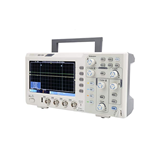

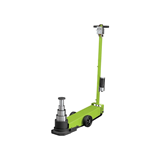
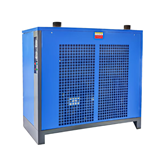
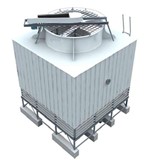


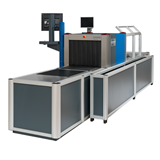

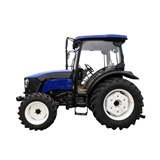
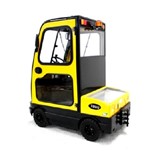
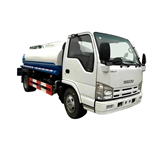

-160x160-state_article-rel-cat.png)

-160x160-state_article-rel-cat.png)
